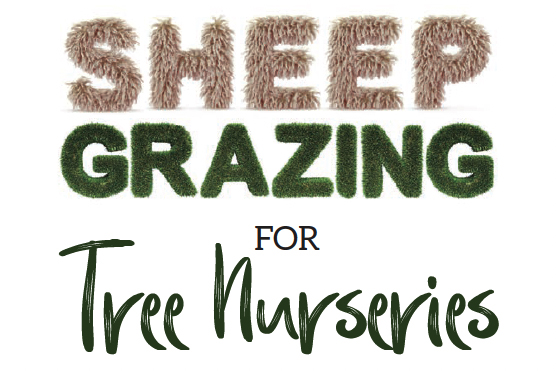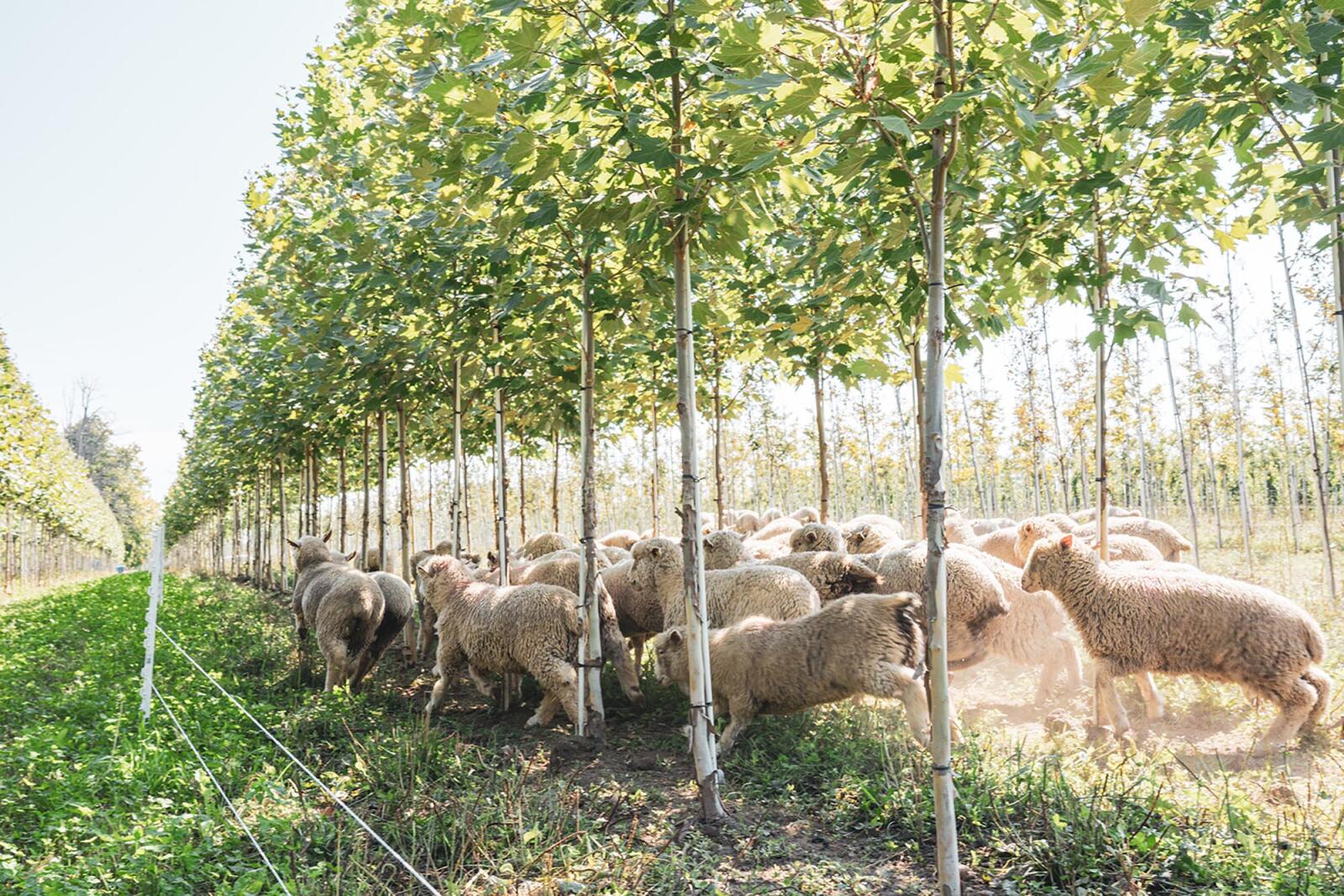
Sheep grazing for tree nurseries
BY GILLES LAPOINTE
PHOTOS BY KARINA SINCLAIR
It is always interesting to watch webinars, talks or videos on sustainability and agroecology. This is so relevant in our present day as we realize that things are not going well on the planet. We need to change because we won’t survive if things remain the way they are. Over the years, the idea of becoming sustainable has grown — especially when we talk about food and feeding the population. We understand we cannot survive without food. So, if we do not change our agricultural practices, we will not be able to harvest a sufficient amount of food to feed us all.
One can read on the Food and Agriculture Organization website about the number of harvests left in our soils if we do not stop its degradation. Agriculture equals food. But what about nurseries that grow plants not necessarily for food production? What about landscapes not necessarily created for growing food? Should we worry about sustainability for them too? Also, how many nurseries and farms in general have fields that are degraded to the point where they can no longer sustain trees and other crops? How many times have landscape specialists begun work on a property with unhealthy trees and shrubs, where grass will not even grow? Importing new soil is not always the answer or even a possible solution. So how can we revive the existing soil?
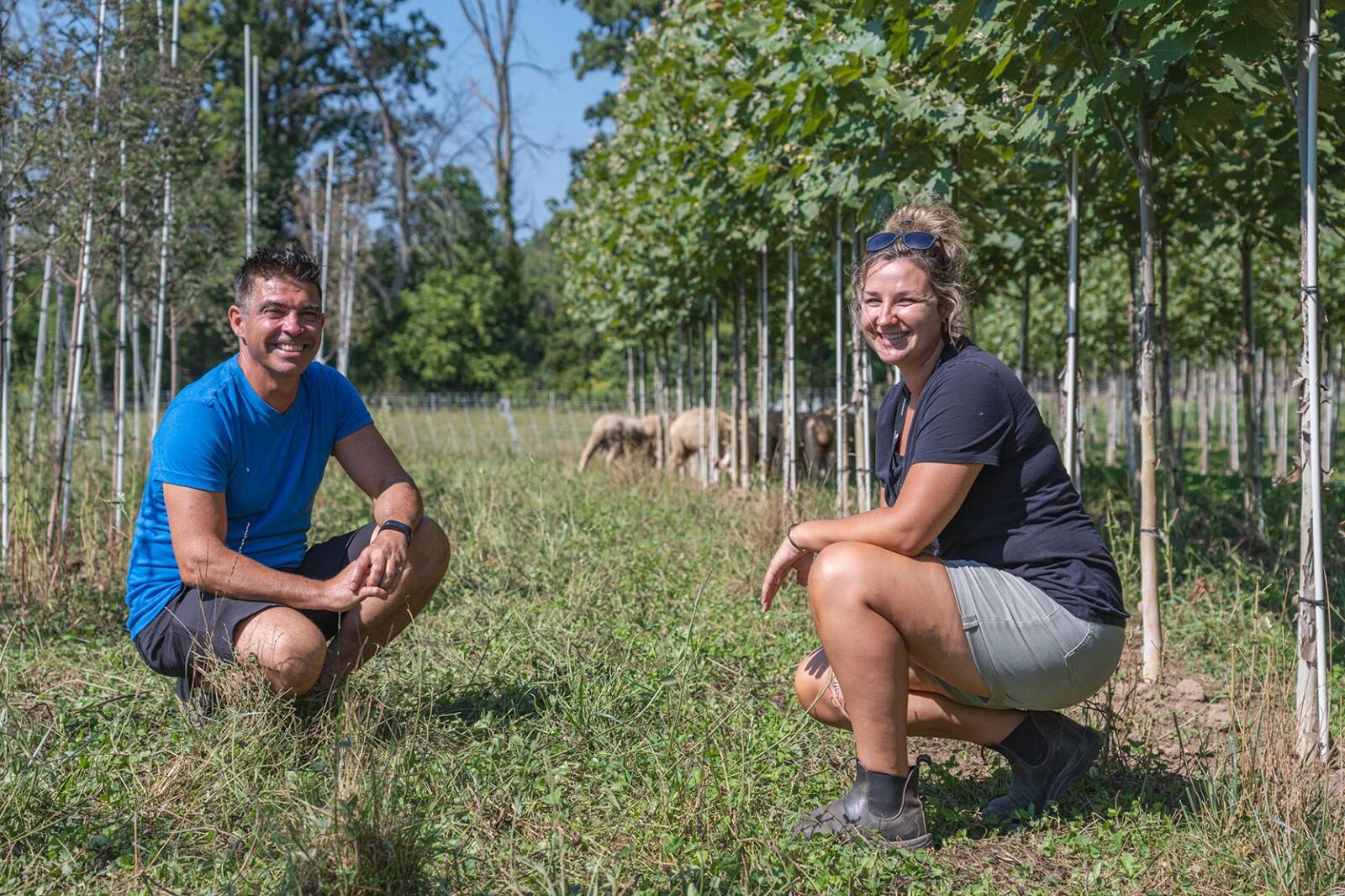
Gilles Lapointe and Caitlin Ayling at NVK Nurseries in Dundas, Ont. in the summer of 2022.
When soils are dead, we can refer to them as dirt. We need to rekindle the life in them by using agroecological techniques. Agroecology refers to systems that deliver services to the environment. For example, plants in a landscape and trees in a nursery field provide food and lodging to birds and insects. As well, these plants sequester carbon and remove pollutants from the environment.
We need to choose the right plants that can offer different services to the environment — they need to be adapted to the area they will grow into. There, the aerial parts will fix carbon (photosynthesis/carbon sequestration), which will be carried in part down into the soil, which will increase the organic matter. The roots of the plants will attract microbes changing your dirt to soil, creating a living environment. The whole ecosystem improves, bringing in worms, increasing moisture, boosting nutrient availability, lowering temperatures, etc. Above ground, the plant biomass produces material that falls on the ground and decomposes, increasing the organic matter. But what is happening in the underground world, where we find the roots, may actually be more important than what is occurring above ground. Roots, when undisturbed, help create aggregation in the soil. When they die, they create channels in the ground for worms to move around. Roots also create various exudates (carbohydrates released in the ground) which act as both foods and a signaling system for microbe interactions with them. Microbes can then bring specific nutrients to the plants. All of this is driven by the roots!
Here is the another concept to look at — animal grazing for tree farms. The French term says it all: éco-pâturage! In some English literature it is called eco-grazing and an article I read a while ago considered this technique ancient and abandoned. How can this fit into our production methodology in 2023? It may not be practical to use herbivores in landscapes of private homes, but I am open to the idea of using them on large complexes. Why not use them on the grounds of conservation areas, parkland, or nursery? Remember, our ancestors used techniques that were less damaging than many of our “new” methodologies today.
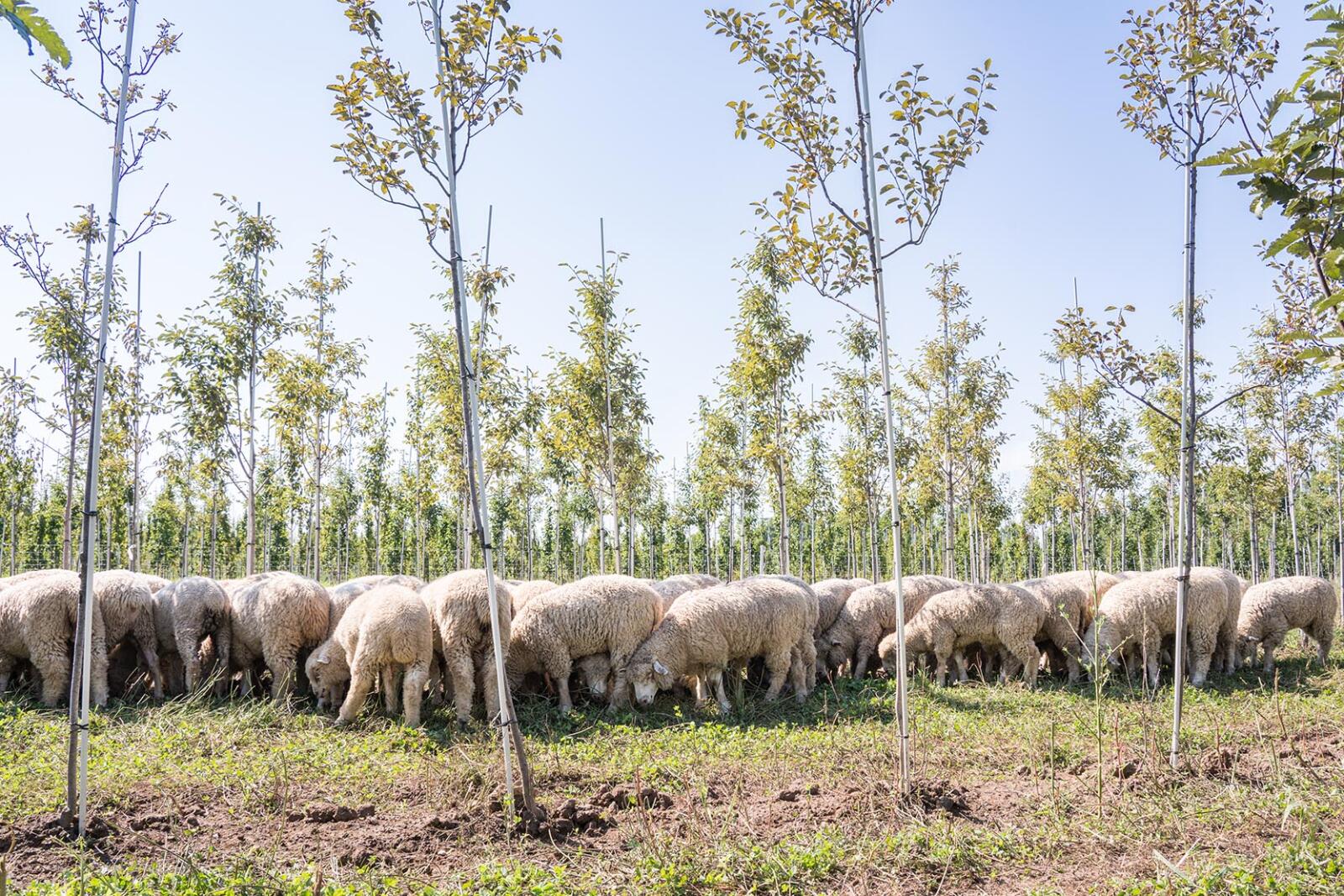 Frolicking sheep enjoy the cover crops between nursery trees at NVK Nurseries in Dundas, Ont. while also providing a useful eco-service.
Frolicking sheep enjoy the cover crops between nursery trees at NVK Nurseries in Dundas, Ont. while also providing a useful eco-service.
In 2022, I was part of a team that introduced a flock of sheep to some tree fields at NVK Nurseries. The sheep graze on the cover crops we installed previously to reduce bare soil between the rows of trees. For sustainability to be realized, the use of farm animals is this last element that completes the cycle of life.
Let’s look at this concept in terms of agroecology. We have plants, insects, microbes, and we can think of incorporating the last element: farm animals. When we use grazing in fields, these animals provide a great service to the environment. On one side they “mow” your plants (cover crops, weeds, pond borders, etc.), and they “evacuate” their end products onto your land, bringing a huge number of microbes and organic matter to your soil. They allow you to decrease the frequency of mowing with tractors, decreasing compaction, gasoline expenses, manual labour, machinery damage, tree damage, and more.
At NVK Nurseries we brought in sheep in order to “work” with us. The goal is to manage grazing to increase soil health and ecosystem services. At the end, trees should grow healthier and faster which is the main goal of a nursery. Did you know that between 75 and 90 per cent of the plant nutrients fed to animals are excreted in their manure?
It is very difficult for most to consider using grazers on their farms. A lot of work and preparation needs to be done in order to accomplish this. If any of you have followed me on LinkedIn or the nursery’s social media, you have seen the evolution of this trial. A large part of this trial is actually to gather information. This technique is used across the world on other continents and also in Niagara-area vineyards. Great publications have been shared with valuable information, but every situation is different. We need to adapt the technique to our own situation. There are several goals to strive for by using a technique: decreasing mowing (saving on fuel, labour, mechanical repairs), decreasing hoeing at the base of trees to keep the zone clean, decreasing mechanical damage done to trees by mowing and hoeing, increasing soil health and decreasing compaction. My colleague Caitlin Ayling and I accumulated a good amount of data, including soil analyses along with visual observations. We have visited the grazers and studied their behavior along with the environment they now live in. Due to the introduction of new groups of sheep brought to us by the sheep farmer, we have learned that each group behaves differently adding to the challenges of working with them.
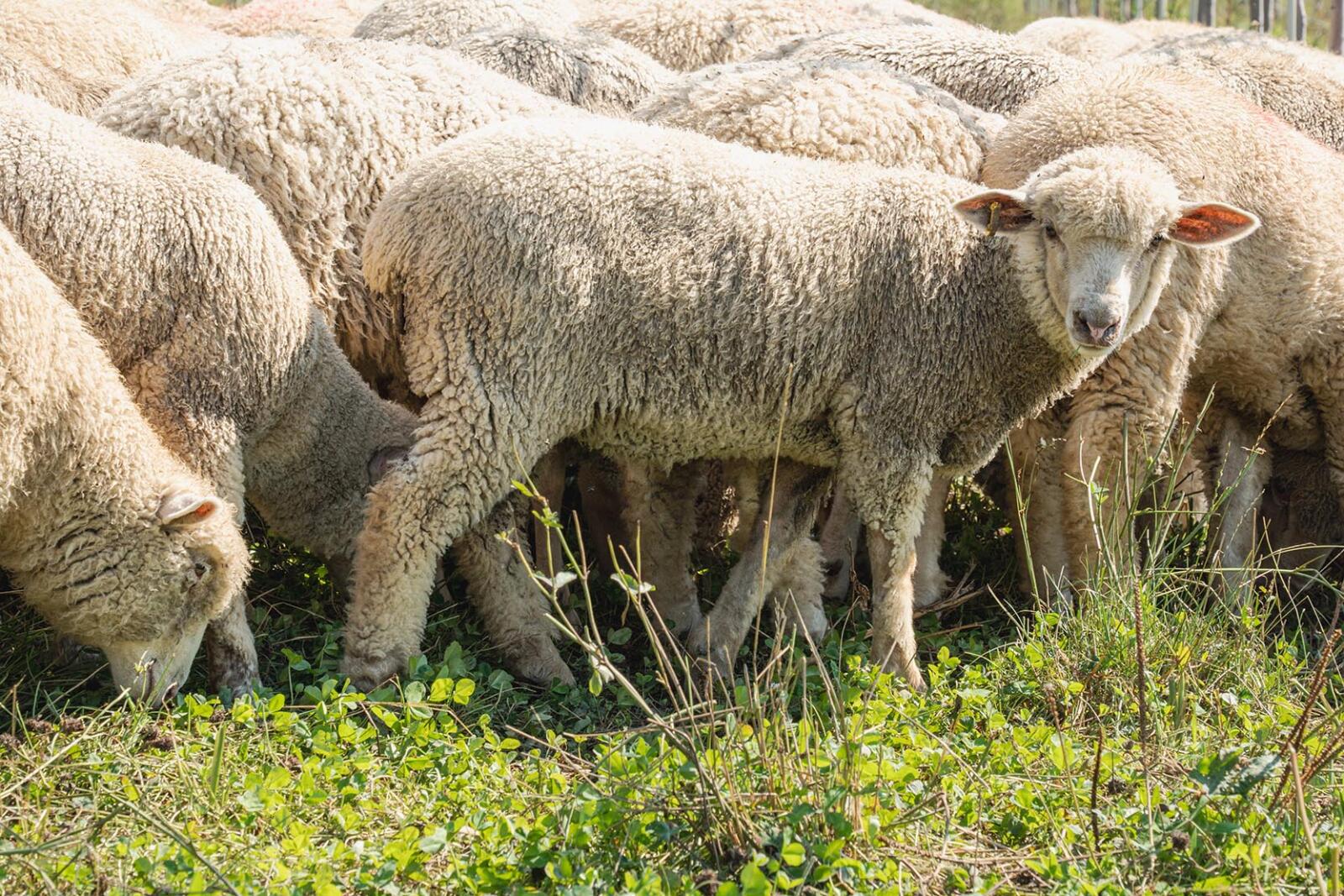
So far, the use of sheep has been very interesting and I would venture calling it a partial success. The sheep have needs we must meet to avoid potential problems. Their urine and feces basically disappear within a couple of weeks, so buildup is not an issue. Some damage to trees has been noted, but we have not yet made the comparison with mechanical damage due to our usual hoeing and mowing. The sheep can selectively eat plants, preferentially starting with dandelions. They clean up the zone around the trees. They also eat non-stop since their digestive tract rejects up to 90 per cent of the nutrients ingested, and this is a very positive element for our soils. We do not leave the grazers long in one area, selectively moving them at specific time intervals to new sections of the field. The cover crops recover and regrow rapidly. We have learned that sheep cannot be set up to graze near some specific species of trees with low branches, as the damage they cause by feeding and climbing is not acceptable for production quality.
Going forward with this technique, we would have to modify our management practices and also our production setup. This will give us lots to think about; calculating the cost of soil health and the cost of becoming more sustainable is not so easy!
Gilles Lapointe completed 16 years of post secondary studies earning him a BSc in agronomy, a MSc and a doctorate in plant physiology, biochemistry and genetics. Following a long career in the plant world he led a landscaping company in Mississauga for 15 years and then moved into R&D on sustainability and soil health on tree nursery grounds. He became an expert consultant on soil health, cover crops and sustainability through his applied scientific studies. Gilles is an independent consultant helping other nurseries and standard agriculture farmers to improve their soils and management to reach sustainability, and can be reached at gillesnurseries@gmail.com and phone number 905.462.8577.
